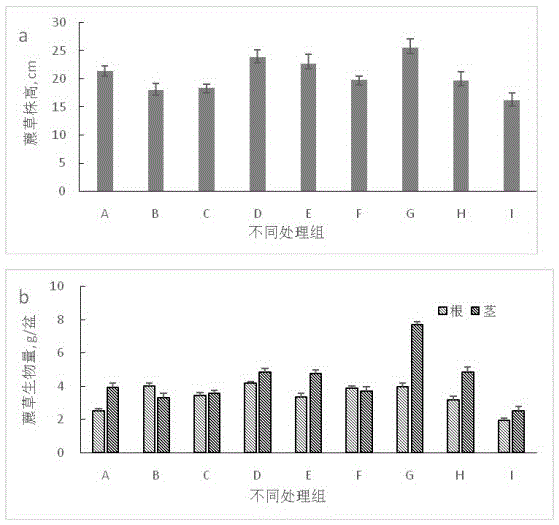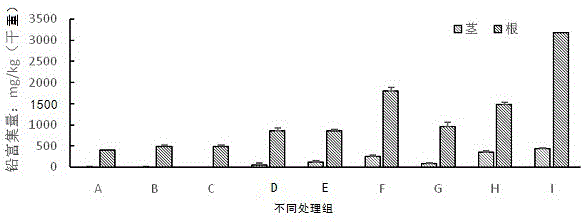Method of combinedly-reinforced repairing pyrene-and-lead combinedly-polluted soil with scripus triqueter
A technology of compound pollution and lead pollution, applied in the restoration of polluted soil, etc., can solve the problems of slow growth of hyperaccumulative plants, small biomass, and restrictions on the practical application of phytoremediation technology, so as to improve bioavailability and improve The effect of absorbing and reducing the possibility of secondary pollution
- Summary
- Abstract
- Description
- Claims
- Application Information
AI Technical Summary
Problems solved by technology
Method used
Image
Examples
Embodiment approach
[0016] The experiment lasted for 60 days in 2014 (2014.8.2~2014.10.2), and the experiment site was selected in the laboratory building of the School of Environmental Chemistry, Shanghai University. The scallops used in the experiment were collected from the Binjiang Wetland of Wusongkou, Shanghai, and 1,000 syringa seedlings were planted per square meter after one week of slowing down. The plants were pre-cultivated in the test soil for about 10 days (keep the soil moisture content in the pot at the maximum in the field) 75% of water holding capacity). Nine treatment groups were set up in the test, and each treatment group had three parallels, that is, nitrilotriacetic acid and alkyl glycoside solutions with different concentration ratios were added to the potted plants after pre-cultivation, so that their contents in the soil were: 0g / kg, 1g / kg, 2g / kg and the above concentrations are listed in Table 1.
[0017] The processing of table 1 pot experiment
[0018]
[0019] ...
PUM
 Login to View More
Login to View More Abstract
Description
Claims
Application Information
 Login to View More
Login to View More - R&D
- Intellectual Property
- Life Sciences
- Materials
- Tech Scout
- Unparalleled Data Quality
- Higher Quality Content
- 60% Fewer Hallucinations
Browse by: Latest US Patents, China's latest patents, Technical Efficacy Thesaurus, Application Domain, Technology Topic, Popular Technical Reports.
© 2025 PatSnap. All rights reserved.Legal|Privacy policy|Modern Slavery Act Transparency Statement|Sitemap|About US| Contact US: help@patsnap.com



